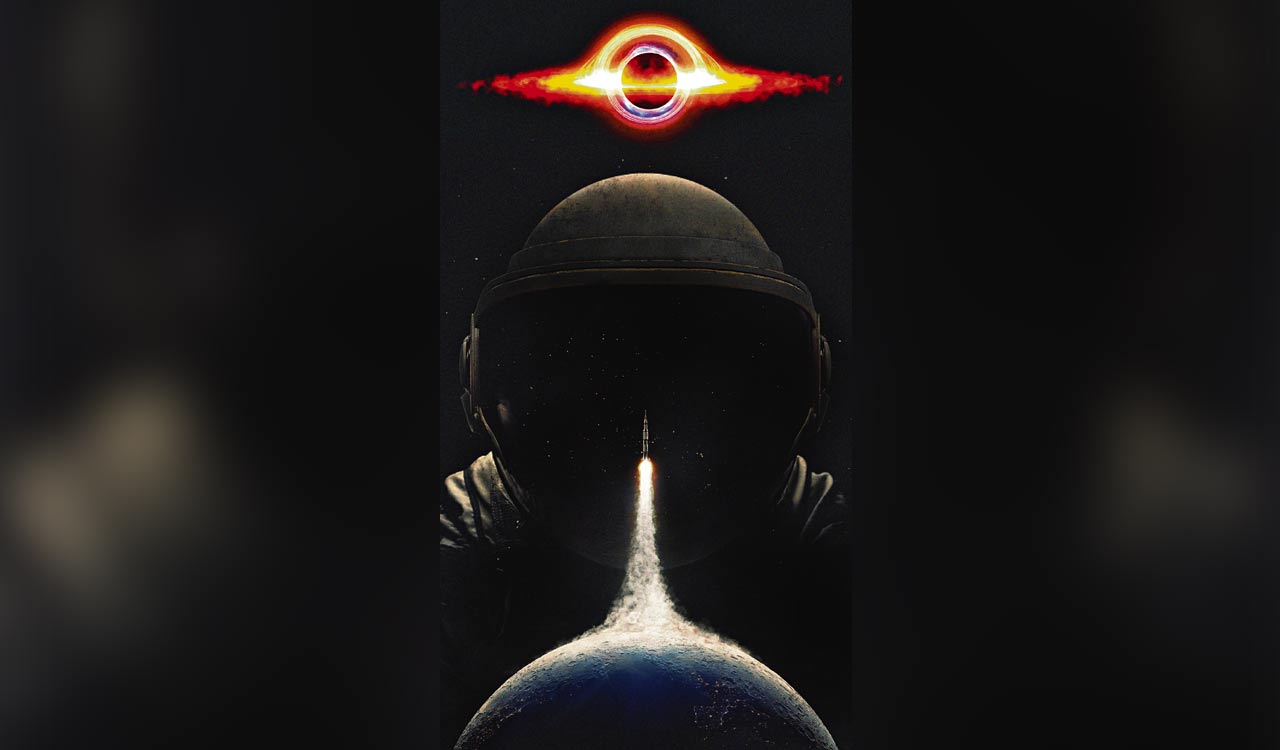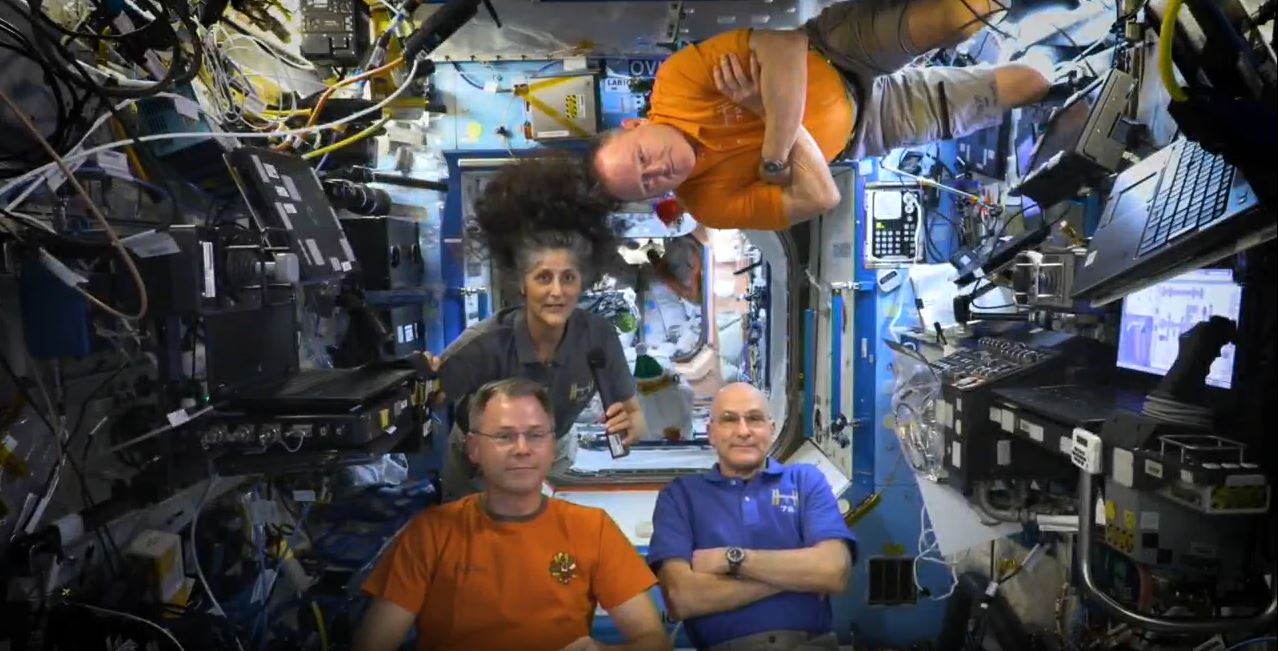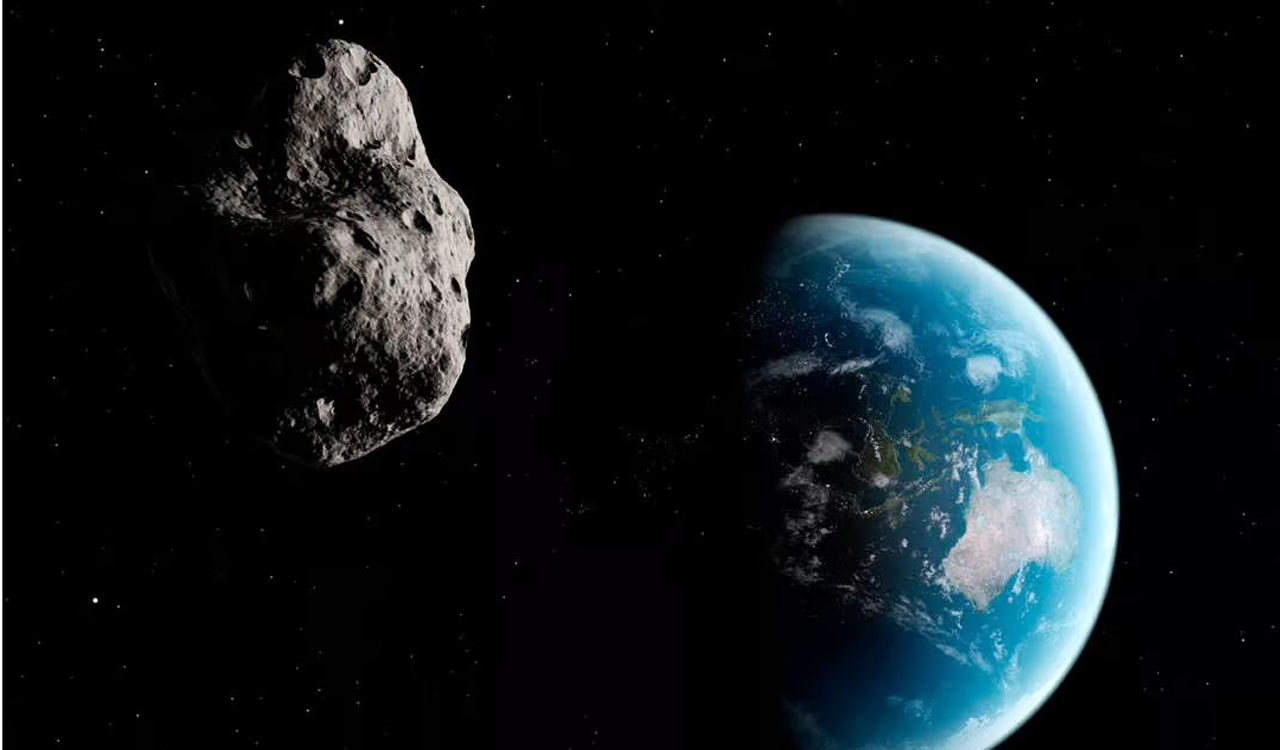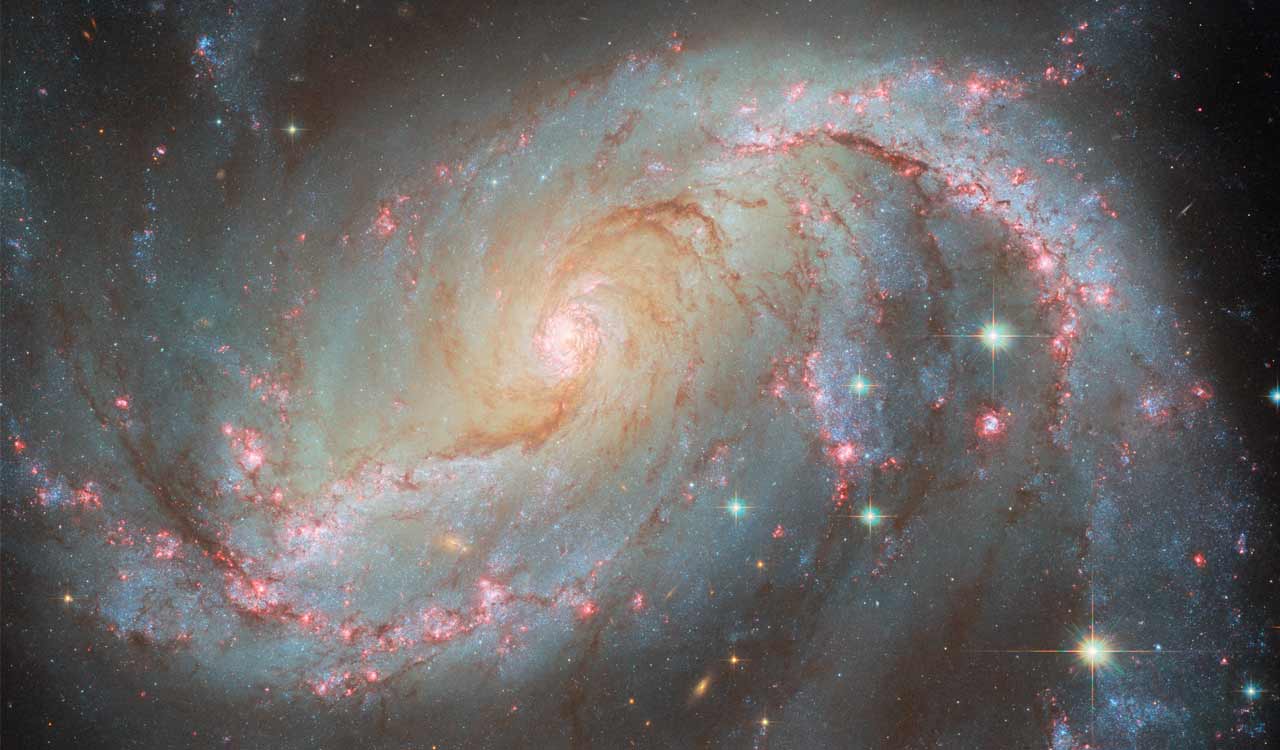Rewind: Cosmos Calling
From the invisible quantum world to incomprehensibly large galaxies, recent discoveries have helped in expanding our understanding of the mysteries of the universe

By Suresh Dharur
For millennia, the star-lit sky has fascinated humans and triggered profound questions about the cosmos, the mysteries of its origin and our place in it. The Rig Vedic hymn Nāsadīya Sūkta makes a sceptic contemplation about the origin of the universe, stating even gods may not know how and why the universe came into being because they came after creation, and that even the “surveyor of that which has been created, in the highest heaven may or may not know”. Carl Sagan, the iconic astronomer and science communicator, summed up the mind of an explorer when he famously said, “Somewhere, something incredible is waiting to be known.”
Also Read
Incredible things are indeed happening in distant worlds. And, glimpses of this stunning cosmic spectacle are now available to us, thanks to scientific tools like the James Webb Space Telescope (JWST), the most sophisticated ‘window to the universe’ ever built that marked the dawn of a new era in astronomy.
Launch of European Euclid space telescope marks the beginning of an exciting journey to find evidence of invisible dark matter and dark energy, and how it is shaping our universe
From the invisible quantum world to incomprehensibly large galaxies, recent discoveries have helped in expanding our understanding of the mysteries of the universe. In fact, it is an immensely exciting time for astronomers and physicists as modern tools are able to break new ground and push the boundaries of knowledge about the origin and working of the universe.
If the detection of the cosmic background hum — a low-frequency choir reverberating across the universe — filled us with a sense of wonder, a flurry of stunning discoveries by Webb telescope covering black holes, baby stars, supernova explosions, exoplanets and the contours of an early universe has left us awe-struck and yearning for more. It’s virtually an eye candy from the heavens.
So near, yet so far
Moons are the solar system’s natural satellites and our immediate neighbours. But, despite centuries of observation, we are nowhere near arriving at the exact number of moons. In May this year, astronomers announced that they had found 62 new moons orbiting Saturn. With this, the number of confirmed moons orbiting this distant leviathan rose to 145, the highest for any planet in the solar system. In the past, four spacecraft were sent to Saturn but still, these moons escaped discovery.
There is now a renewed interest in exploring our very own moon. NASA is gearing up for Artemis II, scheduled for 2024, the first manned moon mission in 50 years, a prelude to Mars exploration. The crew includes the first woman and the first person of colour. This mission paves the way for the expansion of human deep space exploration and presents new opportunities for scientific discoveries, commercial, industry and academic partnerships. India too is in the moon race. Its Chandrayaan-3 mission, aimed at making a safe and soft landing on the lunar surface, has generated much enthusiasm in scientific circles.
Exploring the unknown
The recent launch of the European Euclid space telescope marks the beginning of an exciting journey to find evidence of invisible dark matter and dark energy and how it is shaping our universe. Unlike the normal matter we experience here on the Earth, dark matter neither reflects nor emits light. It binds galaxies together and is thought to make up about 80% of all the mass in the universe. We have known about it for a century, but its true nature remains an enigma.
After years of coordinated research under the banner International Pulsar Timing Array consortium, scientists have picked up the background hum of the universe from the gravitational waves
Many believe that the acceleration of the universe is driven by an unseen force called dark energy. This makes up about 70% of the energy in the universe.
Designed to capture ancient light emitted more than 13 billion years ago as the embryonic universe was still learning how to create stars and galaxies, the James Webb telescope—30 years and $10 billion in the making—is providing a stunning new view of the cosmic firmament. With its penetrating infrared gaze, the most sophisticated space lab ever built is now revealing planets, stars, and more in a whole new way. The breathtaking images being beamed back by the telescope reveal giant celestial landscapes of dust and gas, the deepest reaches of the Universe, huge, interacting galaxies, and dying stars in their final throes of life.
But the images themselves, however mind-blowing, are just the tip of the iceberg. Behind them are mountains of data that are set to reshape our understanding of the Universe. From the deepest realms of the cosmos all the way home to the celestial backyard of our Solar System, there is not a single domain of the Universe that the Webb telescope cannot make a meaningful investigation.
It has already captured stunning images of the moments before a star’s death in the constellation Sagittarius, about 26,000 light years away, and galaxies dating back just a few hundred million years after the Big Bang. Another fascinating development is the detection of the most distant active supermassive black hole ever seen. It was spotted in a galaxy that existed just over 570 million years after the Big Bang.
Webb’s primary mission is to reveal the “let there be light,” moment when the stars and galaxies first ignited after the Big Bang. The unique design and the sophistication of NASA’s telescope make it ideal to search for signs of potentially life-supporting atmospheres around scores of newly documented exoplanets — celestial bodies orbiting distant stars.
Saturn’s moon Titan is also the only moon in our solar system to have a thick atmosphere — a hazy one dotted with methane clouds
Launched in 2021 after decades of strenuous international coordination, it is looking at the universe like never before and discovering thousands of new galaxies more distant and ancient than any previously documented — some perhaps more than 150 million years older than the oldest identified by its predecessor Hubble. It is capable of collecting enough light from astronomical objects — ranging from birthing stars to exoplanets — to reveal what they are made of and how they are moving through space. This data has already begun to reveal the atmospheric composition of planets hundreds of light-years from the Earth in great detail, offering hints as to their ability to potentially support life as we know it.
Despite its focus on distant galaxies and star formation, the Webb is an all-purpose observatory. Its powerful infrared eye sees details in solar system objects beyond the reach of conventional telescopes. Early observations include studying cloud belts on the gas and ice giant planets; tracking cloud formations on Saturn’s largest moon, Titan; exploring Pluto’s climate; and probing many of the smaller asteroids and trans-Neptunian objects that populate the outer solar system. The Webb is so powerful that if one spends enough time with the data it beams, one could probably find any galaxy that ever formed in the universe!
Peering into the past
To look outward into space is to peer into the past. The farther away a star or galaxy lies, the older it is, making every telescope a kind of time machine. One of Webb’s scientific objectives is to look into the distant reaches of the Universe to see how the first galaxies were born. It can do this because light takes billions of years to cross our cosmos. When Webb collects this light, it is seeing those objects as they looked billions of years ago.
Soon after the Big Bang, as the universe expanded, the galaxies sped away from the Earth so fast that their light has been stretched and shifted to infrared wavelengths which are invisible to the human eye. Beyond a certain point, the most distant galaxies are receding so quickly, and their light is so stretched in wavelength, that they are invisible even to the Hubble telescope.
A planet orbiting a star in the constellation Virgo is now the most explored world outside our solar system
Not anymore. Infrared vision is the key strength of the Webb. It is offering a spectacular slide show of our previously invisible nascent cosmos — ancient galaxies carpeting the sky like jewels on black velvet, fledgling stars shining out from deep within cumulus clouds of interstellar dust, hints of water vapour in the atmosphere of a remote exoplanet. This is both a new vision of the universe and a view of the universe as it once appeared new.
The first transformative moment came when Webb captured the first direct image of an exoplanet. Thanks to Webb, a planet orbiting a star in the constellation Virgo, about 700 light years from the Earth, is now the most explored world outside our solar system. Scientists identified carbon dioxide in its atmosphere — the first time the gas has ever been found in an exoplanet’s atmosphere. These early revelations are a harbinger of more amazing science to come with the Webb telescope.
Search for signs of life
Deep in the delicate traceries of the Orion Nebula, about 1,300 light-years from the Earth, the Webb has detected an important carbon molecule never before seen in interstellar space. Methenium is a carbon compound long predicted to play a pivotal role in organic chemistry. Since life as we know it is carbon-based, Methanium in interstellar space has implications for our understanding of how life might emerge elsewhere in the galaxy. This detection not only validates the incredible sensitivity of the Webb telescope but also confirms the postulated central importance of Methanium in interstellar chemistry.
NASA is gearing up for Artemis II, scheduled for 2024, the first manned moon mission in 50 years. The crew includes the first woman and the first person of colour
The study of interstellar organic chemistry, which the Webb is opening in new ways, is an area of keen fascination to many astronomers.
A view of the Southern Ring nebula—the remnants of an exploded star—revealed hints of complex carbon molecules known as polycyclic aromatic hydrocarbons floating in its midst. Such molecules drift through space, settling in clouds that then give birth to new stars, planets, asteroids — and whatever life might subsequently sprout.
Titan’s clouds
Saturn’s moon Titan is a weird and intriguing place. The moon has rocks made of water ice, as well as rivers, lakes and seas made of liquid methane and ethane. It is also the only moon in our solar system to have a thick atmosphere — a hazy one dotted with methane clouds. Scientists got a glimpse of some of these clouds when the Webb captured atmospheric data from the moon. This is an extraordinary finding.
In another significant finding by the telescope, a gas giant planet orbiting a sun-like star 1,120 light-years from the Earth, showed evidence of water vapor and hazy clouds. Over time, measurements like these should help us understand the birth of gas giant planets during the formation of star systems, clock climate patterns sweeping around them and enable searches for signs of life.
Cosmic orchestra
Over a century after Albert Einstein predicted the existence of gravitational waves — the ripples in space-time caused by the collision of black holes — scientists have now ‘heard’ them. Some have described it as the ‘song of the stars’ and ‘cosmic orchestra’. These gravitational waves are the collective echo of supermassive black holes — thousands of them, some as massive as a billion suns, sitting at the hearts of ancient galaxies up to 10 billion light-years away — as they slowly merge and generate ripples in space-time. After years of coordinated research under the banner International Pulsar Timing Array consortium, scientists from across the world, including India, have picked up the background hum of the universe from the gravitational waves that originated billions of years ago.
Webb spotted the most distant active supermassive black hole ever seen in a galaxy that existed just over 570 million years after the Big Bang
It is revealed that the universe is awash with gravitational waves, the ripples in the fabric of the universe that bend and stretch space-time as they travel through everything at the speed of light almost entirely unimpeded. To detect these low-frequency waves, astronomers focused on pulsars, the remnants of dead stars that exploded in supernovae. Pulsars emit regular beams of radio waves at precise intervals, akin to cosmic lighthouses, making them incredibly accurate clocks.
The monumental breakthrough is celebrated as a transformative milestone uncovering cosmic secrets.
The breakthrough shatters the perception of a static universe and reveals a rolling, noisy universe alive with the cosmic symphony of gravitational waves. It’s like a choir, with all these supermassive black hole pairs chiming in at different frequencies. As more data is gathered, this cosmic hum could help researchers gain further insights into the early expansion of the universe and shed light on the enigma of dark matter and dark energy.
AI, fast-tracking discoveries
Artificial Intelligence tools are now helping astronomers make new discoveries about the universe faster than ever before. Astronomy often involves looking for needles in a haystack. AI algorithms are perfectly suited for picking out the patterns of galaxies. AI tools are also helping in the search for exoplanets. Most of the 5,300 known exoplanets were discovered by measuring a dip in the amount of light coming from a star when a planet passes in front of it. AI tools can now pick out the signs of an exoplanet with high accuracy.

The author is a senior journalist.
Related News
-
Cartoon Today on December 25, 2024
7 hours ago -
Sandhya Theatre stampede case: Allu Arjun questioned for 3 hours by Chikkadpallly police
8 hours ago -
Telangana: TRSMA pitches for 15% school fee hike and Right to Fee Collection Act
8 hours ago -
Former Home Secretary Ajay Kumar Bhalla appointed Manipur Governor, Kerala Governor shifted to Bihar
8 hours ago -
Hyderabad: Organs of 74-year-old man donated as part of Jeevandan
8 hours ago -
Opinion: The China factor in India-Nepal relations
9 hours ago -
Editorial: Modi’s Kuwait outreach
9 hours ago -
Telangana HC suspends orders against KCR and Harish Rao
9 hours ago




